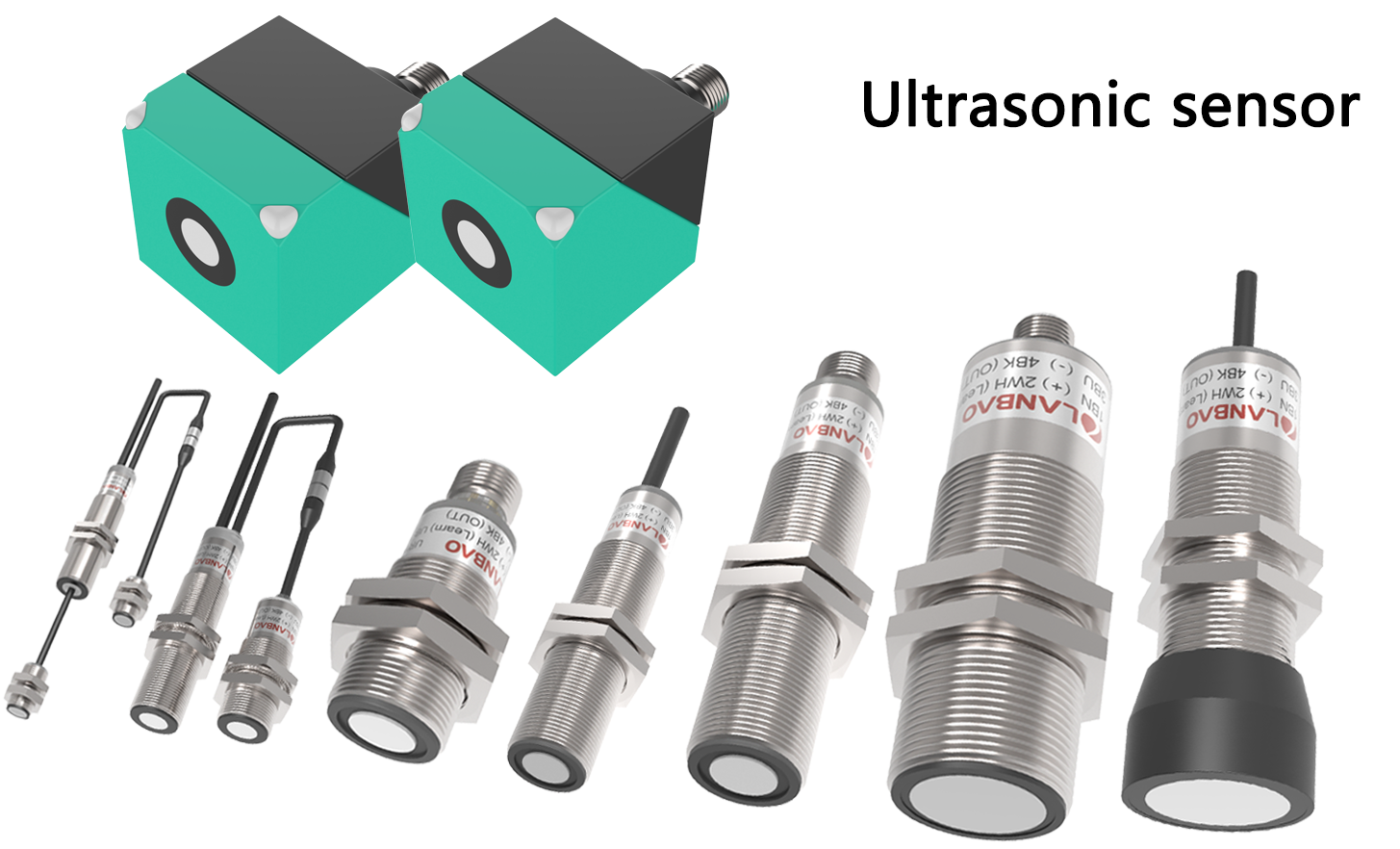An ultrasonic sensor is a sensor that converts ultrasonic wave signals into other energy signals, usually electrical signals. Ultrasonic waves are mechanical waves with vibration frequencies higher than 20kHz. They have the characteristics of high frequency, short wavelength, minimal diffraction phenomenon, and excellent directionality, allowing them to propagate as directional rays. Ultrasonic waves have the ability to penetrate liquids and solids, particularly in opaque solids. When ultrasonic waves encounter impurities or interfaces, they produce significant reflections in the form of echo signals. Additionally, when ultrasonic waves encounter moving objects, they can generate Doppler effects.

In industrial applications, ultrasonic sensors are known for their high reliability and strong versatility. The measurement methods of ultrasonic sensors work reliably under almost all conditions, enabling precise object detection or material level measurement with millimeter accuracy, even for complex tasks.
These areas include:
>Mechanical Engineering/Machine Tools
>Food and Beverage
>Carpentry and Furniture
>Building Materials
>Agriculture
>Architecture
>Pulp and Paper Industry
>Logistics Industry
>Level Measurement
In comparison with inductive sensor and capacitive proximity sensor, ultrasonic sensors have a longer detection range. Compared with photoelectric sensor, ultrasonic sensor can be applied in harsher environments, and is not affated by the color of the target objects, the dust or water fog in the air.Ultrasonic sensor is suitable for detecting objects in different states, such as liquids, transparent materials, reflective materials and particles, etc.Transparent materials such as glass bottles, glass plates, transparent PP/PE/PET film and other materials detection. Reflective materials such as gold foil, silver and other materials detection, for these objects, ultrasonic sensor can show excellent and stable detection capabilities.Ultrasonic sensor can also be used to detect food, automatic control of material level; In addition, the automatic control of coal, wood chips, cement and other powder levels is also very suitable.
Product Characteristics
> NPN or PNP switch output
> Analog voltage output 0-5/10V or analog current output 4-20mA
> Digital TTL output
> Output can be changed through serial port upgrade
> Setting detection distance through teach-in lines
> Temperature compensation
Diffuse reflection type ultrasonic sensor
The application of diffuse reflection ultrasonic sensors is very extensive. A single ultrasonic sensor is used as both an emitter and a receiver. When the ultrasonic sensor sends out a beam of ultrasonic waves, it emits the sound waves through the transmitter in the sensor. These sound waves propagate at a certain frequency and wavelength. Once they encounter an obstacle, the sound waves are reflected and returned to the sensor. At this point, the receiver of the sensor receives the reflected sound waves and converts them into electrical signals.
The diffuse reflection sensor measures the time it takes for the sound waves to travel from the emitter to the receiver and calculates the distance between the object and the sensor based on the speed of sound propagation in the air. By using the measured distance, we can determine information such as the position, size, and shape of the object.
Double sheet ultrasonic sensor
The double sheet ultrasonic sensor adopts the principle of through beam type sensor. Originally designed for the printing industry, the ultrasonic through beam sensor is used to detect the thickness of paper or sheet, and can be used in other applications where it is necessary to automatically distinguish between single and double sheets to protect equipment and avoid waste. They are housed in a compact housing with a large detection range. Unlike diffuse reflection models and reflector models, these doule sheet ultrasonic sensors do not continuously switch between transmit and receive modes, nor do they wait for the echo signal to arrive. As a result, its response time is much faster, resulting in a very high switching frequency.

With the increasing level of industrial automation, Shanghai Lanbao has launched a new type of ultrasonic sensor that can be applied in most industrial scenarios. These sensors are not affected by color, glossiness, and transparency. They can achieve object detection with millimeter accuracy at short distances, as well as ultra-range object detection. They are available in M12, M18, and M30 installation threaded sleeves, with resolutions of 0.17mm, 0.5mm, and 1mm respectively. The output modes include analog, switch (NPN/PNP), as well as communication interface output.
LANBAO Ultrasonic Sensor
| Series |
Diameter |
Sensing range |
Blind zone |
Resolution |
Supply voltage |
Output mode |
| UR18-CM1 |
M18 |
60-1000mm |
0-60mm |
0.5mm |
15-30VDC |
Analog, switching output (NPN/PNP) and communication mode output |
| UR18-CC15 |
M18 |
20-150mm |
0-20mm |
0.17mm |
15-30VDC |
| UR30-CM2/3 |
M30 |
180-3000mm |
0-180mm |
1mm |
15-30VDC |
| UR30-CM4 |
M30 |
200-4000mm |
0-200mm |
1mm |
9...30VDC |
| UR30 |
M30 |
50-2000mm |
0-120mm |
0.5mm |
9...30VDC |
| US40 |
/ |
40-500mm |
0-40mm |
0.17mm |
20-30VDC |
| UR double sheet |
M12/M18 |
30-60mm |
/ |
1mm |
18-30VDC |
Switching output (NPN/PNP) |



